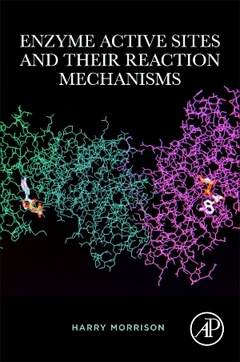Description
Enzyme Active Sites and their Reaction Mechanisms
Author: Morrison Harry
Language: English
Subjects for Enzyme Active Sites and their Reaction Mechanisms:
Keywords
?(R)-methylmalonyl-CoA; 4-chloro-l-threonine; 5'-deoxyadenosylcobolamin; 5'-monophosphate; AIDS; Acetic acid; Acetyl-CoA; Acetylcholinesterase; Acyl group; Adenosylmethionine; AdoHcy; AdoMet; Alcohol dehydrogenase; Aldehyde dehydrogenase; Aldehydes; Alkoxide anion; Alpha keto radical; Alzheimer; Amino acid; Amino acid residue; Amyotrophic lateral sclerosis; Anion; Anticancer drug; Arginase I; Arginine; Base excision repair; Bicarbonate anion; Biosynthesis; Biotin; Calcitonin; Calcium; Calcium ion; Camphor; Carbon dioxide; Carbonic anhydrase II; Carbonyl group; Carboxypeptidase A; Catalysis; Catalytic triad; Chloride anion; Choline; Cis-dichloroethylene; Citrate synthase; Cleft; Condensation; Cyclobutane pyrimidine dimer; Cysteine protease; Cytochrome; DNA; DNA biosynthesis; Dehydration; Deprotonate; Deprotonation; Dichloroalkene; Dihydrolipoyl dehydrogenase; Dimethylallyl pyrophosphate; Dioxygenases; Enamine; Enzyme; Ferric atom; Flaps; Flavin adenine dinucleotide; Fructose-1; 6-bisphosphate; Genome; Geranyl pyrophosphate; Glucose; Glutamate anion; Glycoside hydrolase; Glycosylase; Guanidinium; H-bond; HIV; Halide anion; Halogenase; Halorespiration; Heme propionate; Hepatitis C; Hepta-coordinate; Horse liver; Huntington; Hydrogen bond; Hydrolysis; Hydrolytic enzyme; Hydroxyethylidene-TPP; Hydroxyl group; Hypochlorous acid; Ionization; Iron cluster; Isoenzymes; Isopentenyl pyrophosphate; Isozyme; Ketones; L-serine; L-threonine; Lesion; Lipoic acid; Lone-pair electron; Lysine 2; 3-aminomutase; Lysozyme; Magnesium
280 p. · 15x22.8 cm · Paperback
Description
/li>Contents
/li>Biography
/li>Comment
/li>
Enzyme Active Sites and their Reaction Mechanisms provides a one-stop reference on how enzymes "work." Here, Dr. Harry Morrison, PhD and Professor Emeritus at Purdue University, provides a detailed overview of the origin and function of forty enzymes, the chemical details of their active sites, their mechanisms of action, and associated cofactors. The enzymes featured highlight a step forward, along with possible areas of application, thus supporting new research in academic and industrial labs. Each chapter is written in a clear format, including a brief summary of enzyme function and structure, a detailed description of their mechanisms of action and associated co-factors.
- Offers a comprehensive, biochemical understanding of enzyme mechanisms and their reaction sites
- Supports new research in academic, medical and industrial labs, connecting discoveries powered by recent advances in technology and experimental approaches to areas of application
- Features short, carefully structured, actionable chapters on various enzyme classes, thus allowing for easy-use and searchability
These books may interest you

Fundamentals of Enzyme Engineering 137.14 €



